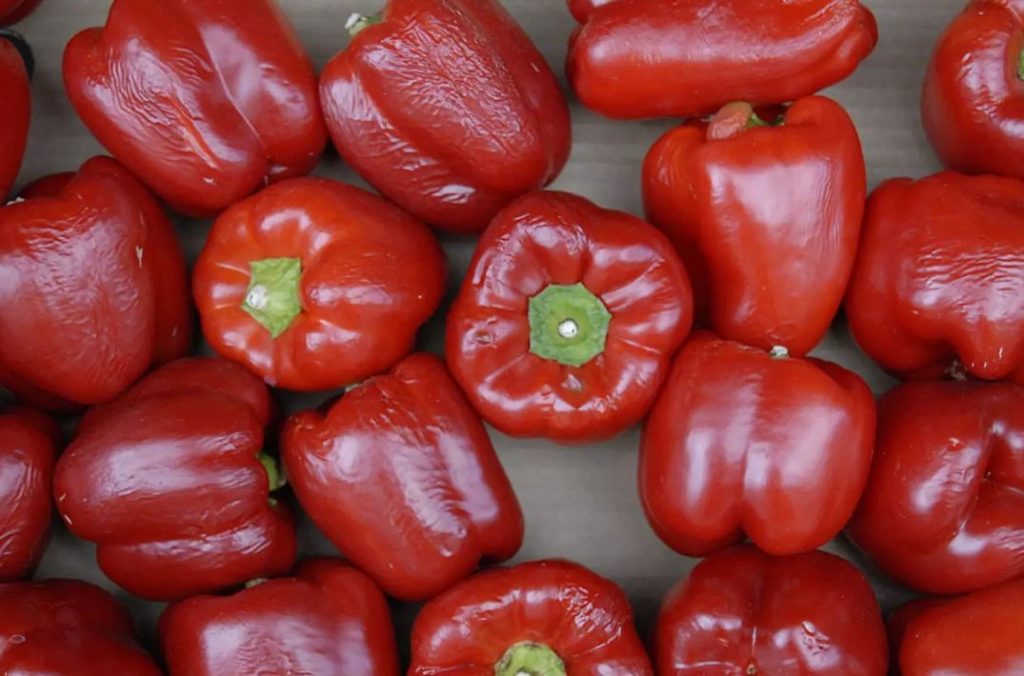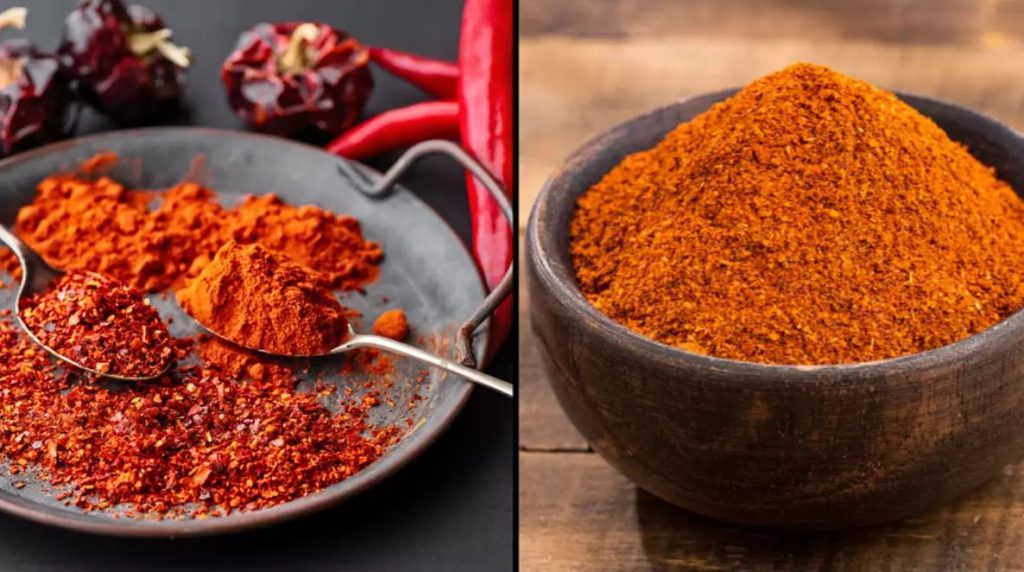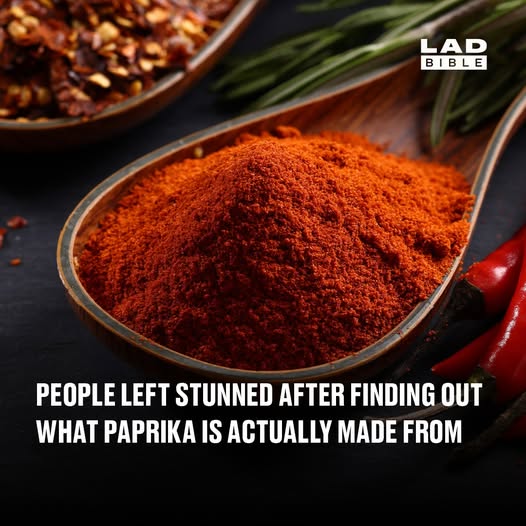Paprika is the red spice found in pantries worldwide but many are surprised to learn exactly what it is. Beneath its powdered surface lies a simple origin: dried and ground red peppers
Origins & Etymology
The term “paprika” comes from the Hungarian word paprika, itself a diminutive of the Serbo-Croatian papar, meaning “pepper”. This aligns with the spice’s literal roots: it’s made entirely from capsicum vegetables—specifically, red peppers in the Capsicum annuum family. Brought to Europe from the Americas in the 16th century, these peppers took hold in countries like Hungary and Spain, becoming integral to their cuisines.

The Simple Process of Making Paprika
- Selection of Peppers – Ripe red peppers are chosen, whether mild bell varieties or spicy chili peppers.
- Drying – Peppers are dehydrated until nearly moisture-free—sun-dried, kiln-dried, or smoked over wood (for smoked variants)
- Grinding – The dried peppers—flesh, sometimes seeds or stems—are ground into the fine powder known as paprika
- Depending on the type of pepper, drying method, and inclusion of seeds, paprika can range from mild and sweet to hot or smoky.
Types of Paprika
Sweet (Regular) Paprika
Mild with a slight sweetness and minimal heat; most commonly used in everyday cooking for color and a gentle pepper flavor
Hungarian Paprika
A culinary staple with distinct flavor grades, from sweet (édesnemes) to spicy (erős). Hungary is known for producing paprika with vibrant taste and color.
Spanish Paprika (Pimentón)
Available in dulce (sweet), picante (hot), and agridulce (bittersweet). Smoked paprika—pimentón de la Vera—is particularly prized and smoked over oak for a rich, smoky flavor
Culinary Benefits & Nutrition
Paprika contains vitamins, antioxidants, and compounds like capsaicin that support vision, reduce inflammation, and boost immunity. It’s versatile—used in dishes from deviled eggs and stews to paella and marinades. To unlock maximum flavor, paprika is often sautéed in oil early in cooking—but be careful, as prolonged heat can make it bitter.
Common Misconceptions & Reactions
Despite paprika’s common usage, many remain unaware of its simple vegetable origin. Social media users admitted to thinking there was a fictional “paprika tree” until seeing packets labeled with red peppers. One Instagram comment read: “Learning that Paprika is just dried and crushed red bell peppers was really shocking” Others pointed out how the name is a clue, stemming from words meaning “pepper”.
Choosing & Storing Paprika
- Type matters: sweet, smoked, or hot paprikas each bring unique flavors—choose based on your dish.
- Store well: keep in airtight containers away from light and heat. Use it within six months for peak freshness
- Culinary tip: to make a smoky rub or paella, use smoked paprika; opt for sweet paprika when color and mild pepper flavor are desired

Final Takeaway
Paprika may look exotic, but it’s simply dried and ground red peppers—an unassuming yet powerful kitchen staple. Whether sweet, hot, or smoked, it enhances dishes with color, flavor, and nutritional benefits. The next time you sprinkle that red dust over your cooking, remember: it’s just peppers that have traveled from harvest through drying and grinding to become one of the most popular spices in the world.

















